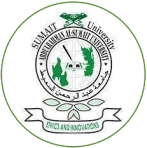Dhima ya Ushikamani wa Mandhari na Jukwaa la Kisasa katika Maigizo Teule ya Kiswahili ya Studioni
Keywords:
Ushikamani, Mandhari, Jukwaa, MaigizoAbstract
Due to the development of science and technology influenced by globalization in African societies,
including Tanzania, studio acting has emerged. This has caused difficulty in distinguishing the
border of the stage and the scene of the dramas. This is because the part that was used as a stage in
the past, that is the part that rose in the hall in front of the audience as they say (Mugubi and
Kebaya, 2012), is currently no longer used; even when it is used, it is not a theater for acting but a
theater to show the drama recorded in technological tools such as television, computer and video
recorder (Wanjala and Kavoi, 2011). Thus, the analysis of the elements of the scene and the
modern stage in Kiswahili dramas has been controversial, because the place where there should be
a stage is where the scene appears. Therefore, the article has identified the role of the cohesion of
the scene and the modern stage in the Kiswahili dramas of the studio in order to introduce the
importance of that cohesion. If the research of this article had not been done, the audience of
Kiswahili dramas as well as the critics would have continued not to see the roles of the cohesion of
those elements in studio dramas
Downloads
References
Bauman, Z. (1989). Modernity and the Holocaust. Oxford: Polity Press.
Foley, J. M. (1995). The singer of tales in parformance. Indian University Press.
Gituku, N. (1990). Maigizo ya kienyeji ya watoto nchini Kenya. Tasnifu ya M.A, Chuo Kikuu cha
Kenyatta.
Issa, S. A. (2023). Bado natafuta na safari ya Gwalu. (Mahojiano ya simu kutoka kwa mtafiti tarehe
/ 2 / 2023. Muda: 8: 30 mchana).
Kahuro, K. K. (2018). The art of stage directing: A case of three Kenyan Directors. In The School
of
Creative Arts, Film & Media Studies of Kenyatta University.
Kantangayo, K. (2011). Matumizi ya lugha za sanaa ya Kiswahili katika kazi za sanaa. East African
Publishers.
Madumulla, J. S. (2009). Riwaya ya Kiswahili. Nadharia, historia na misingi ya Uchambuzi.
Phoenix.
Mulokozi, M. M. (2017). Utangulizi wa fasihi ya Kiswahili. KAUTTU.
Mutegi, L. (2010). Maigizo katika fasihi simulizi: Mfano wa kirarire katika nyimbo za tohara za
wameru. Tasnifu ya Umahiri, Chuo Kikuu cha Kenyatta.
Mganga, N. A. (2021). Kifani cha fasihi neni. Karljamer Publishers Limited
Njogu, K. & Chimerah, R. (1999). Ufundishaji wa fasihi nadharia na mbinu. Jomo Kenyatta
Foundation Ltd.
Ponera, A. S. (2019). Misingi ya utafiti wa kitaamuli na uandishi wa tasnifu. Central Tanganyika
Press.
Qassim, A. R. (2022). Mustakabali wa malezi ya watoto katika vichekesho teule vya Mai Zumo na
Dogo Sele. Tasnifu ya Umahiri, Chuo Kikuu cha Waislam cha Morogoro: Tanzania.
Samweli, M. (2015). Umahiri wa Kiswahili. MEVELI Publishers.
Simbi, I, Wasike, M. & Amukowa, D. (2019). Matumizi ya maigizo kama mbinu ya kufundisha
tamthilia katika shule za upili, kaunti ya Bungoma Kusini, Kenya: Kibabii University.
Wamitila, K. W. (2003). Kichocheo cha fasihi: simulizi na andishi. Kenya Focus Publication Ltd.
Wanjala, F. S na Kavoi (2011). Mbinu za mawasiliano na ufundishaji na ujifunzaji wa Kiswahili.
Serengeti Bookshop.
Wafula, R. M. &Njogu, K. (2007). Nadharia za uhakiki wa fasihi. Jomo Kenyatta Foundation.
Wamitila, K. W. (2002). Uhakiki wa fasihi: Misingi na vipengele vyake. Nairobi Phoenix
Publishers Limited.

